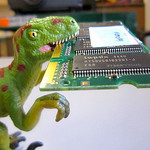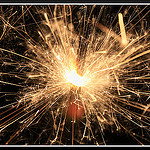

I attended BDNT last night and four of the presenters had cancelled the day before. For shame!
Instead of scrambling to find new presenters, Robert Reich, the organizer for nine years(!), had a free ranging discussion about the nature of the meetup and how it could best serve its audience. He also asked for suggestions on how to make the meetup better, from both new attendees and regulars. People came up with a wide variety of suggestions:
- fostering networking
- setting up mentoring
- focusing on technology rather than business
- having a joint meetup with other meetups in the area
In a testimonial to the willingness of the people who run BDNT to experiment (or to the lack of imagination of participants), Robert had tried almost all the suggestions at one point or another, and they’d all been abandoned because of either lack of manpower, lack of success or lack of adoption.
Robert also mentioned that the BDNT seems to be a great ‘top of funnel’ meetup for people who are new to town. They come the BDNT, learn about the Boulder scene, and move on to other, more focused groups and meetups. Because so many different types of people use this meetup as a jumping off point, that can make it difficult to focus.
I think it is great that we could have such a discussion, and someone suggested ‘discussing roadblocks’ as a topic that the meetup could focus on. Robert immediately asked ‘who has a roadblock’ and someone mentioned hiring as a tough one. There then was a fairly free form but moderated discussion about hiring–what the best way to hire was, what the right questions for founders, employers and employees were, and how to think about risk profiles.
Unlike in past meetups I have attended, the room wasn’t packed (only about 100 people, which makes that a small BDNT). Additionally there was very little Twitter backplane discussion (I saw three comments on the #bdnt hashtag, and two of them were mine).
There were also two of the more typical presentations, from a marijuana dispensary product search engine and a piece of hardware that modifies music based on sensor input. I unfortunately wasn’t able to fully view either of these presentations, but it was nice to end up where I think the BDNT is unique: demos and pitches.
I don’t have any great advice for Robert on making the meetup better. It seems that getting 100-400 people to take a few hours out of their lives to discuss new technology for almost a decade is a success any way you measure it. If he still loves the meetup and the people he’s meeting, he should continue on. If he doesn’t, then it might be time to quit, if he can’t find someone to take it over.
Sometimes things end.

